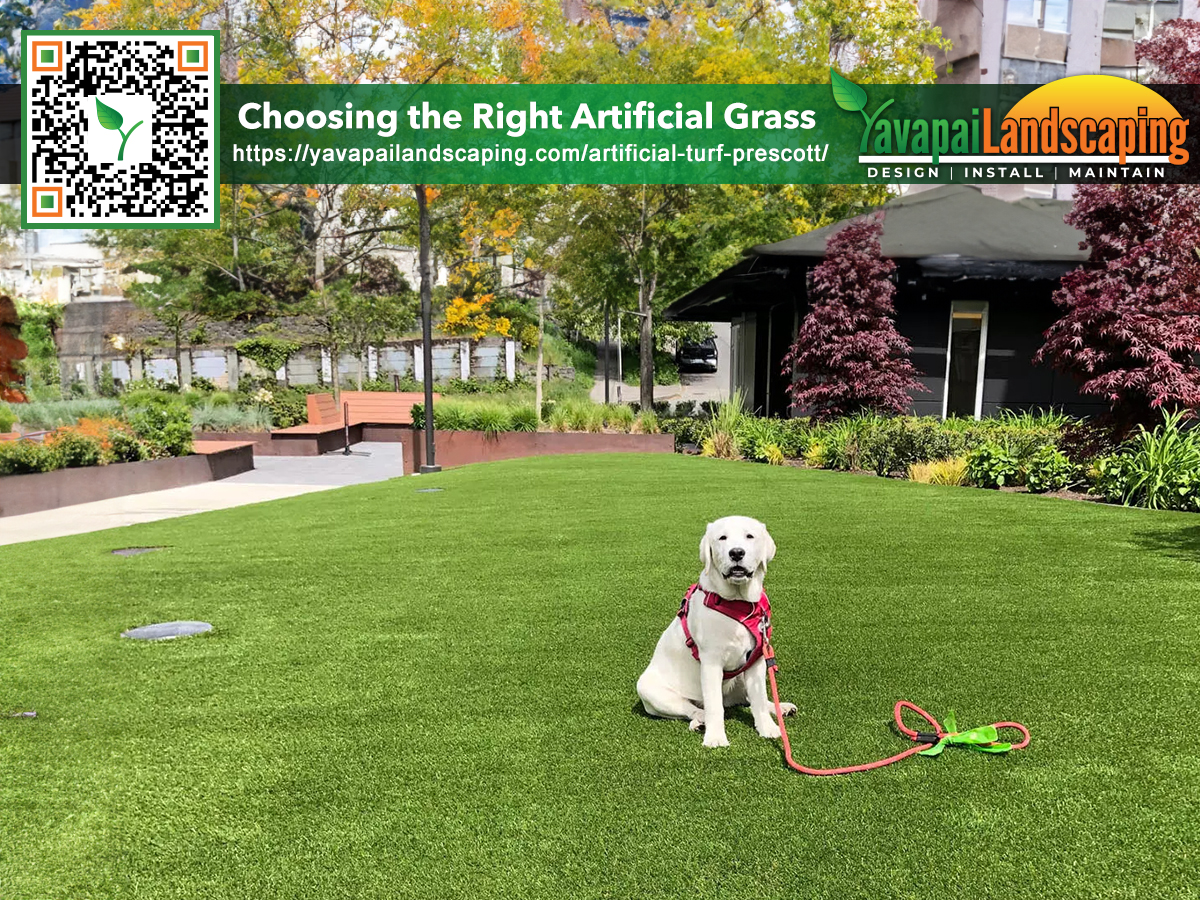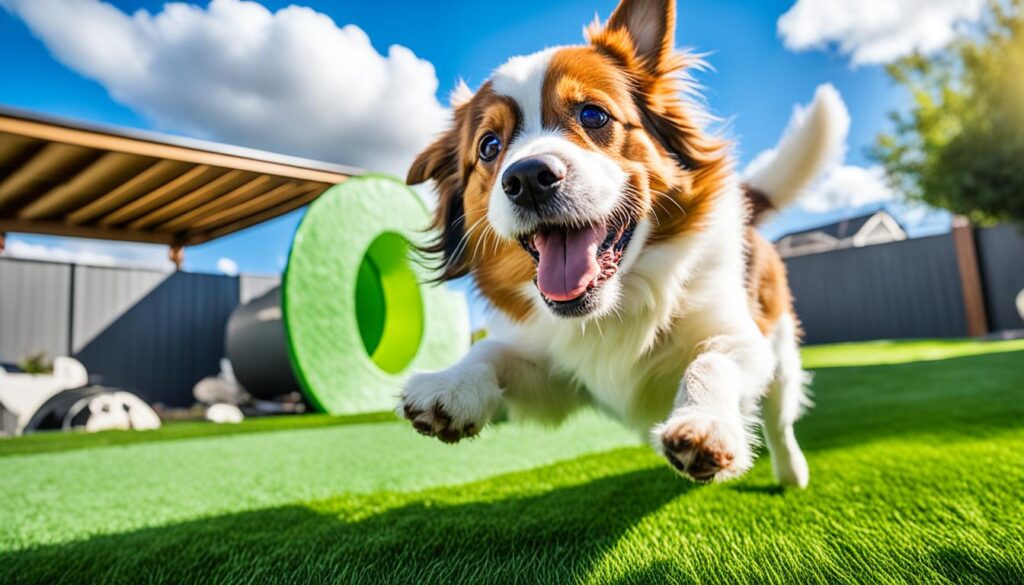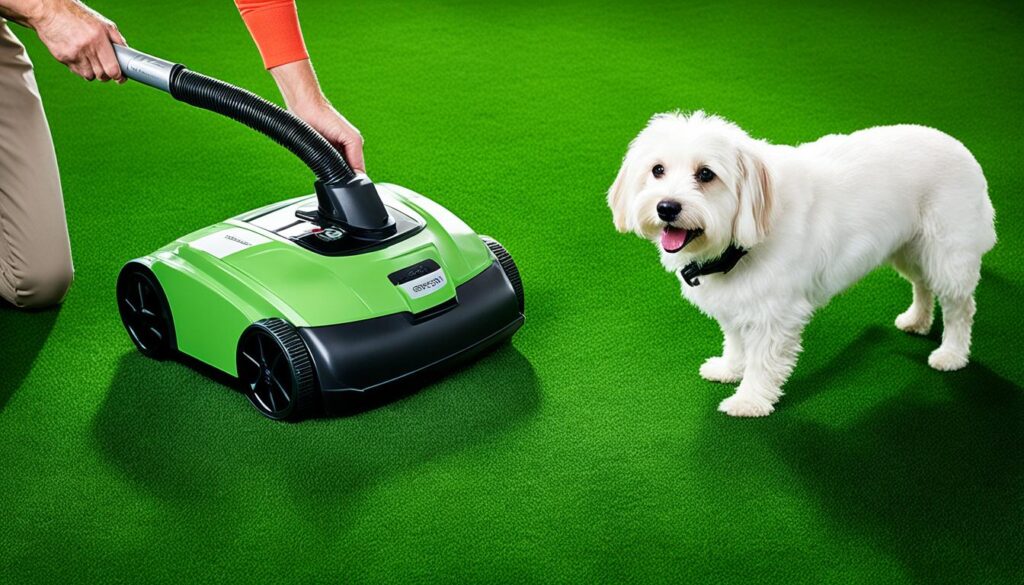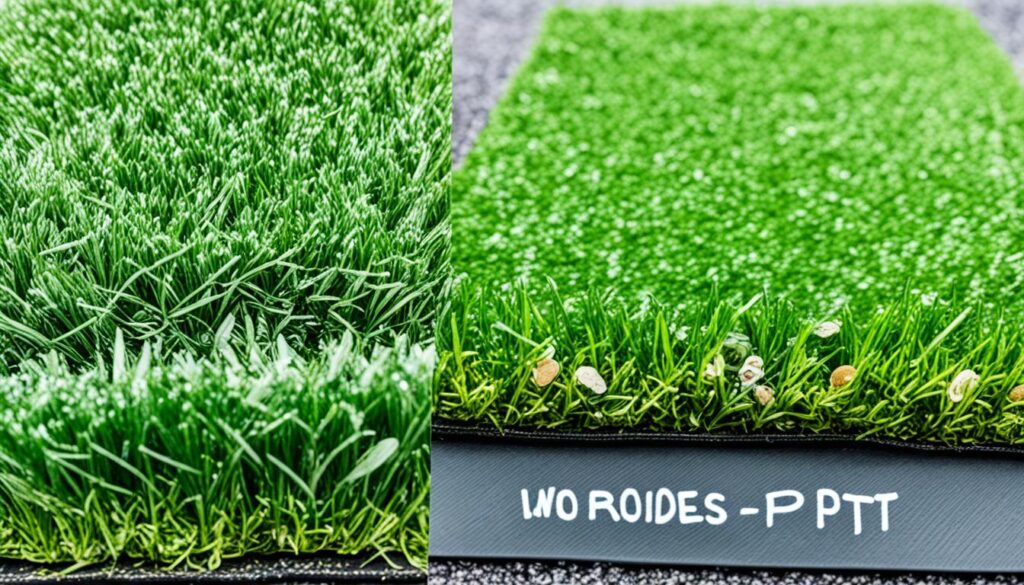
Pet owners are looking for ways to have beautiful, pet-friendly outdoor spaces. Synthetic turf is becoming a top choice because it’s low-maintenance and practical. This article will discuss artificial grass’s benefits and possible issues for pets.
Let’s look at how artificial grass affects the well-being of dogs, cats, and other pets. It’s great for their health, easier to clean, and has fewer allergens. For pet owners, a yard with synthetic turf can be a stress-free zone.
We’ll also cover common worries, like whether it gets too hot, whether bacteria grow, and its impact on our planet. After reading, you will know if artificial grass is a good fit for your pets and home.
Key Takeaways
- Artificial grass offers an easy-care option for yards with pets.
- It helps to lower allergens and keeps bugs away from pets.
- You can clean up after pets easily with artificial grass.
- It might get too hot for pets in some places, so be cautious.
- Keeping artificial grass clean is key to preventing bacteria.
Understanding Artificial Grass for Pets
Artificial grass is a top pick for pet owners who want an easy-to-manage backyard. This fake grass is tough and simple to keep. It’s perfect for homes with pets.
What is Artificial Grass?
Artificial grass looks and feels like the real stuff but is made from synthetic materials. It’s mostly polyethylene fibers on a base. These fibers have UV protection, so they don’t fade.
Types of Artificial Grass Suitable for Pets
There are several types of pet-friendly fake grass:
- Short-pile turf: Ideal for easy cleaning and maintenance
- Antimicrobial turf: Helps prevent bacterial growth
- Drainage-enhanced turf: Allows quick removal of pet waste and liquids

Comparing Natural and Artificial Grass for Pet Areas
Looking at a real lawn versus fake grass, there are key points to check:
- Maintenance: Artificial grass needs less work
- Durability: It can take more paw traffic than real grass
- Cleanliness: It’s easy to keep artificial grass clean
- Cost: Over time, it might save money even though it costs more upfront
Deciding between natural and artificial grass for pets involves considering these aspects. Pets and their families should choose the best option for their outdoor area. Prepare to be inspired by this outstanding article.
Artificial Grass Pet Benefits: A Comprehensive Look
Artificial grass for dogs is great for pet owners. It offers a tough, low-maintenance surface for pet play areas. Let’s check out why it’s good for pets.
Pet owners love how simple artificial grass is to maintain. There’s no need to cut, water, or apply fertilizer like natural lawns. This means less work and less water, and it’s good for the earth. It also stays green all year, keeping your yard looking pretty.
Synthetic grass is tough. It can handle lots of running and playing without getting damaged, so your active dog will have a great time without ruining the yard.
- No mud or grass stains
- Reduced allergens for sensitive pets
- Easy to clean and sanitize
- Eliminates the need for harmful pesticides
Artificial grass also has a big hygiene plus. It dries quickly, stopping puddles and muddy paw prints. Its special material fights bad smells and germs, keeping the area cleaner.
Synthetic grass is always a comfy place for pets. It’s cool in the summer and doesn’t turn rock hard in winter, making your pet’s outdoor time fun and good for their health all year.
Potential Health Concerns for Pets on Artificial Grass
Artificial grass brings many good things but also raises health issues for pets. Knowing these problems is key to keeping your animals safe on artificial lawns.
Allergies and Sensitivities
Some pets might get allergies to the stuff in fake grass. If your pet is itching a lot, has red skin, or licks its paws often, it might be allergic. It would be wise to check with your vet. Also, think about using other surfaces where your pet plays.
Heat Retention and Overheating Risks
Fake grass heats a lot in the sun, which could hurt pets. To keep it cool on hot days, you should:
- Provide shaded areas
- Wet the turf to cool it down
- Limit outdoor time during peak heat hours
Bacterial Growth and Sanitation Challenges
To avoid bacteria on artificial grass, you must clean it often. Since pet waste can cause bacteria to spread, here is what you should do:
- Remove solid waste promptly
- Rinse the area with water frequently
- Use pet-safe disinfectants periodically
These actions will help keep your pets safe on artificial grass. It’s all about watching and caring for your pet’s play space.
Maintaining Artificial Grass in Pet-Friendly Environments
Keeping artificial grass fresh is vital when pets play on it. Regular cleaning is key. Remove solid waste quickly and wash the area with water to stop bad smells.

It’s important to clean up pet waste well. Use special cleaners for pet pee. These cleaners are safe for pets and keep your grass in good shape.
- Rake the grass fibers weekly to prevent matting
- Hose down the area bi-weekly to remove dust and debris
- Apply a pet-friendly turf deodorizer monthly
To clean thoroughly, use a power brush on your artificial grass. This stirs up dirt and pet hair. Then, rinse with water and white vinegar to kill germs.
You are looking after your artificial grass, which makes it last longer. It also creates a fun and safe place for pets. Use these tips to keep your outdoor space nice for everyone, including your pets.
Environmental Considerations of Artificial Grass for Pet Owners
Pet owners face a tough challenge in making their yards eco-friendly. Artificial grass might seem like a smart choice—it uses less water—but making and disposing of it can hurt our planet.
Now, greener fake turf options are becoming common. They are made from recycled stuff and some from plants. This cuts the carbon impact. Plus, some brands let you recycle your turf when it’s done.
Using less water is a big plus for fake grass. Real grass needs a lot of water, particularly in dry areas. The fake kind doesn’t need this liquid, saving lots of water yearly. This is great for the Earth.
Also, it’s tough and can stay nice for up to 15 years. This means less frequent switching out and less trash, so it doesn’t harm the planet as much as real grass that needs frequent care.
When picking between natural and fake grass, pet owners should think about:
- Water use and the weather where they live
- How easy it is to get eco-friendly fake grass
- The work needed to keep it up over time
- How they can get rid of it when it’s time
By considering these points, pet owners can make a good choice. It should meet their pet’s needs and be good for our world. The choice between natural and fake grass comes down to what’s best for the yard and the Earth.
Cost Analysis: Artificial vs. Natural Grass for Pet Areas

Choosing between artificial and natural grass for pet areas is key. Although synthetic turf costs more initially, it could save money over time.
Natural grass demands regular costs:
- Regular mowing
- Watering
- Fertilizing
- Pest control
Conversely, artificial grass is low-maintenance so that you can save a lot in the long run.
Making the Right Choice: Is Artificial Grass Right for Your Pet?
Choosing the right landscaping for pets can be difficult. Artificial grass has benefits, but it’s important to consider a few things first. Look at your pet’s size, breed, and how much they move. This will help you figure out if artificial grass is a good choice for them.
Think about your daily life and what you like to do. Artificial grass needs less work than real grass. This makes it great for people who are always on the go. But it would help if you also considered the starting cost and its environmental impact over time.
The weather is key, too. In warm places, fake grass can get hot, which might not be comfortable for your pet. On the other hand, synthetic grass can be a blessing if it rains a lot where you live. It keeps the area from turning into mud, keeping your pet’s feet clean.
In the end, it’s about what works best for you. You can decide if artificial grass is a good fit by looking at your pet’s needs, how you live, and the environment. Consider these things to make a smart choice about your pet’s outdoor area.
Yavapai Landscaping Prescott offers complimentary estimates for Prescott and its surrounding communities for Landscaping and tree Services. This includes tree removal, trimming, stump grinding, land clearing, storm clean-up, and emergency tree services.
